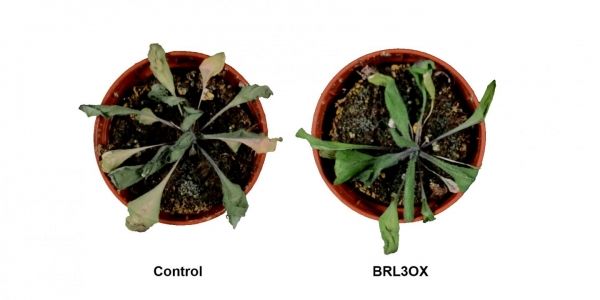Extreme drought is one of the effects of climate change that is already being perceived. This year, the decrease in rainfall and the abnormally hot temperatures in northern and eastern Europe have caused large losses in cereals and potato crops and in other horticultural species. Experts have long warned that to ensure food security it is becoming necessary to use plant varieties that are productive in drought conditions. Now, a team led by the researcher at the Center for Research in Agricultural Genomics (CRAG) Ana Caño-Delgado has obtained plants with increased drought resistance by modifying the signaling of the plant steroid hormones, known as brassinosteroids. The study, published in the journal Nature Communications, is the first to find to find a strategy to increase hydric stress resistance without affecting overall plant growth.
Different receptors and different cells for different functions
Ana Caño-Delgado has been studying how the plant steroids -the brassinosteroids- regulate plant development and growth in the model plant Arabidopsis thaliana for more than 15 years. It is known that these phytohormones bind to different cell membrane receptors, causing a signaling cascade in the cell that will end up producing effects such as cell elongation or division. Since 2016 and thanks to a project funded by the European Research Council (ERC), her laboratory uses this knowledge to find strategies that confer drought resistance to plants. By modifying brassinosteroid signaling researchers had so far achieved arabidopsis plants with increased drought ressistance, but due to the complex action of these hormones on plant growth, these plants were much smaller than the respective controls.
Read more at Center for Research in Agricultural Genomics (CRAG)
Image: Arabidopsis thaliana plants after drought stress. On the left a control (wild-type) plant and on the right a plant overexpressing the vascular brassinosteroid receptor BRL3. (CRAG)


